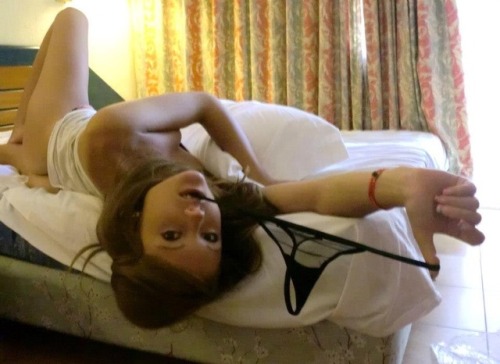#inferior
The inferior function is the hardest to understand and describe. It embodies the part of us that we are least accepting of. Although we are often unaware of its activities, it would be inaccurate to describe the inferior function as “weak” because all of our core functions are powerful in their own way. The power and force of the inferior function actually comes from the mistaken assumption that it has no power. We underestimate the inferior function at our own peril.
MICAHELFROMTHE GOOD PLACE
[ENTP] “The Originator”
DOMINANT FUNCTION: EXTRAVERTED INTUITION [Ne]
Ne is a novelty seeking perceiving function preferring ideas, connections, and possibilities. This is exactly what Michael leads with. He loves exploring different possibilities and this is seen by his ambitious and unusual form of torturing people in hell. He was not satisfied with the usual and craved a more inventive way. He approaches his job as an architect from that perspective, more comfortable in the ideas and possibilities than in the details. He has Janet to help with the details of his plans.

His Ne outlook on the world is also what leads him to perceiving the afterlife a little differently. Not just in his need to put new energy in his hell, but in how he starts to see from the humans’ perspectives and is open to questioning his own beliefs.
These are all the positives of his Ne dominance, but we also see how he can struggle with Ne being his primary mode. Because he is so open to possibilities he can have a hard time coming to firm conclusions and feeling satisfied. He always needs a challenge, a new puzzle to solve.
At times he can be so frozen with possibilities he can’t move forward. This is seen when he confidently makes the deal to run his experiment on four new humans to prove that in the afterlife humans can change. He is frozen by all the ways in which it could all go wrong. Instead of being able to confidently and methodically move forward through the plan, like his ENTJ counterpart would be able to do, he finds himself overwhelmed.
At the same time, because he has a hard time with conclusions and being satisfied, this actually drives him to keep questioning the process of the point system. Like all functions Ne is a double-edged sword.
SECONDARY FUNCTION: INTROVERTED THINKING [Ti]
As mentioned in describing his Ne, Michael likes a challenge. He prefers to innovate logical systems, to strategize, and compete rather than deal with the emotions of others and people in general. This is the difference between how an ENTP funnels their Ne energy versus an ENFP.
His way of helping his friends is more through analyzing the inconsistencies of the system itself and trying to find loopholes. He isn’t great at immediately helping his friends emotionally. This isn’t to say he doesn’t care, he clearly does. We see his way of helping through that channeling of Ne-Ti to try and make lasting change for their overall lives. He may not always be the first to hug or talk through say Eleanor’s familial issues, but he will move the pieces of the puzzle to try and make the situations for his friends better.

As an introverted function, Ti is used more inwardly as well. When he gets enveloped in a project he can seem more intense like an INTP. He tries to solve an issue and seclude himself at times. However, because he leads with Ne he is far more comfortable with ambiguity in the world around him when trying to understand a problem. This is evident when contrasted with Chidi, an INTP, who is not as comfortable with such ambiguity existing in the world.
When trying to figure out if Michael uses more Ti rather than Te, it comes to the approach of the logic used. Michael tries to understand a situation or a problem as they come rather than try to use a rational system to universally filter situations through. Although this can make Michael more relaxed, he can frustrate others with his more laid back sensibilities in situations. While he is open to accepting a lack of concrete answers more often, he can seem inefficient and unserious to others when he does this.
TERTIARY FUNCTION: EXTRAVERTED FEELING [Fe]
All the functions in our stack drive us in some way, but not all come as naturally to us. Fe no matter where in the stack is interpersonal, seeking peace, harmony, and understanding in all relationships. By now, we can see all the pieces coming together. Like I said, he does care. He wants to help his friends and doesn’t revel in their discomfort. But he doesn’t know exactly how to address their discomfort in an actual Fe fashion. While this Fe drives him, he uses his Ne and Ti as described above to try and fix this disharmony.

Because this is lower in his functional stack, he is more comfortable with his inward judgments than expressing them outwardly. This Ti-Fe conflict leads to ENTPs, like Michael, to inwardly resent those who are trying to control him.
This becomes central to Michael’s mission. Yes, he is trying to help his friends, but he also resents being manipulated and forced to be a cog in a machine that isn’t evenly working properly. Luckily, he has friends to keep connecting with his Fe to channel this resentment in a more helpful and positive way. Without this we could see a far more evil Michael trying to take down the system.
INFERIOR FUNCTION:INTROVERTED SENSATION [Si]
Michael is more of an idea man than he is one to deal with a methodical approach and hammering out the details. He is really able to thrive in his role in the afterlife because he has the assistance of Janet to help with the details so his ideas can come to fruition. It isn’t that Michael doesn’t value these details, they are clearly important. But he prefers to keep them in context of the bigger picture of his plans and problem solving than he would to look through each detail himself. However, that only works for so long and Michael can miss crucial details at first.

An example of this is how he assumes that the point system is rigged by hell. Michael is able to quickly see the pattern of people not going to the good place and he immediately makes connections of the possibilities. But he doesn’t start by looking at the details of the point system itself. He comes upon this later to discover the complexities of the system. Now, once he does, he is able to contextualize that complexity immediately, but he could have discovered this sooner if he were more comfortable and prone to searching for the details.
Si being inferior also leads to ENTPs like Michael to forget about their own self-care. He gets so wrapped in problem solving that he forgets to take care of himself. He can have a hard time centering himself in concrete perceptions and go too far with Ne as seen in his break down mentioned in the Ne section. It is important for Michael learn to work with his Si more in order to avoid such consequences.
Post link
ELSAFROMFROZEN
[ISTJ] “The Examiner”
DOMINANT FUNCTION: INTROVERTED SENSATION [Si]
This Queen is one who prefers to deal in concrete facts and experiences over dreamy ideas and theory. Like Extraverted Sensation types, as an ISJ her perceptions are based on her experiences, however instead of reacting and adapting to these perceptions (Anna ESFP), Elsa internalizes them. These experiences build up her identity.
Her dominant introverted sensation perception is best exhibited in her perception of her powers throughout the two films. At first Elsa plays around with her powers with Anna. As her powers make Anna happy, Elsa is happy with her powers. However, once she hurts Anna and her parents react negatively to her powers she learns from this experience to fear her own powers the way her parents do. She internalizes this experience beyond any outside person’s intentions. She represses it and pushes it down to a point of wearing gloves and continuing to seclude herself after her parents are no longer forcing her isolation.

Once her powers start to go out of her control she doesn’t try to learn about her powers or about where they came from. She isn’t seeking a deep meaning. Instead she decides to further isolate herself even from Anna. Her experience has continually taught her that the only way to keep others safe is to stay away from them. Therefore she makes her own ice castle where she can fully use her powers but in no way can she hurt others with them. At least that is what she thinks. It takes being pulled outside of herself and seeing the bigger picture to come back. Her connections with people saves her. But clearly this was a temporary fix because she doesn’t truly address her power in Frozen.
It takes being shaken and forced out of her comfort zone to truly confront the mysteries of her powers and break her home life routine in Frozen II. This is something she wants to do, but is scared and hesitant of. She isn’t looking for some great adventure as she is comfortable and safe in the predictability of her routine. Not until she leaves her home and collects more positive experiences with her powers is she able to change and accept who she is fully. Elsa needs this experience to change her mind. She isn’t one to rely on troll prophecy or wishful thinking.
SECONDARY FUNCTION: EXTRAVERTED THINKING [Te]
When judging a situation Elsa is far more comfortable with logic rather than working with people. She works specifically with extraverted logic which is grounded in accepted and shared knowledge. This gives Elsa a sense of control, which is huge to her character. She needs to feel in control of herself and the world around her. She doesn’t like to appear out of control to anyone. It is part of what contrasts her with Anna so much. Anna is all about getting out and having new experiences. She takes risks. Elsa does not like being seen as someone who would just let something happen to her like that.

Elsa does not have the best tact. We see that when she verbalizes her thoughts and opinions she isn’t always thinking of the social harmony of it all. Her instinct isn’t diplomacy or navigating the social norms of a situation. She is sharp to Anna about what is best for both of them. Always the practical one, she doesn’t have time for Anna’s flights of fancy at the beginning of Frozen. The more in emotional turmoil she is, the less comfortable she is with her own feelings. This leads are to be harsher to those around her.
Another aspect of Te we see in Elsa, is her search for finding a role. She wants to be able to use her gifts to help. She initially thinks this is as queen, but it doesn’t sit right. Through her experiences into the unknown she finds what that role truly is. Not until she feels useful in her new role as the in-between of spirits and humans is she fully realized. As an ISTJ, she finds herself calmer and more confident now that she has found a way for her gifts to be used.
TERTIARY FUNCTION: INTROVERTED FEELING [Fi]
Although Elsa can come off as logical she is a well of deep emotion as well. Because it is lower in her functional stack and is focused inward, being an introverted function, her emotions and feelings are largely unseen on the outside. It can be hard for those who don’t know her intimately to know if she is doing okay or not.

However, Elsa often gets her Fi confused. We see this the most in the first film. Her over reliance on Fi rather than Te judgement is what brings us to her self isolation. First she takes in her experiences with Si, her inferior Ne scares her, and instead of going to her Te she recedes into Fi judgment. This is tricky, because it fuels her Si perceptions that grant her comfort in isolation. She thinks it is the moral thing to do. Elsa becomes stubborn in the idea that this is the good thing to do and that she will only cause harm to others. The feeling of being morally right guided simply internally and not by anything or anyone outside herself really shows itself in how much she digs her heels in to stay away from everyone.
INFERIOR FUNCTION: EXTRAVERTED INTUITION [Ne]
Elsa has a particularly difficult time with change. Don’t get me wrong, once she internalizes the change through her other functions she is open to a new path, but she initially struggles with the chaotic world around her altering. As things initially started to change with her and her sister being able to leave the palace grounds, she sticks to isolating herself and the familiar. She finds comfort in the predictable. Which makes her repression of her powers all the worse as they start coming out.

As an ISTJ, Elsa can feel comfortable going inward when really it is outward that she should really be looking. Because of this she misses her sister trying to reach out to her. A huge part of her journey throughout both films is being more comfortable with the external world and the meanings hidden within it. We see her really engage with her inferior Ne journey in the second film. Although it was experience that pushed her to it, she learns where her powers come from and what they mean. This was crucial to her finding happiness but was not something that came innate to her.
We see her embrace an Ne perspective by the end of the second film as she accepts her role and the amount she can control within it. Although it is great she found her way to her role in the forest, a big part of that was letting go of control of the kingdom and Anna. She had to learn what she can’t control the world around her and she can’t keep overly controlling herself to find comfort. She learns to accept the external world that has meaning outside of herself.
Post link
Everything You Need To Know
“This work sprang originally from my need to define the ways in which my outlook differed from Freud’s and Adler’s. In attempting to answer this question, I came across the problem of types; for it is one’s psychological type which from the outset determines and limits a person’s judgement. My book, therefore, was an effort to deal with the relationship of the individual to the world, to people and things. It discussed the various aspects of consciousness, the various attitudes the conscious mind might take toward the world, and thus constitutes a psychology of consciousness regarded from what might be called a clinical angle.”
- C.G. Jung, Memories, Dreams, Reflections.
Not everybody approaches the world in the same way. In fact, most people seem to differ from each other greatly – sometimes it seems like a miracle that we can even get along at all! In attempting to explore this problem, Jung devised a system of types that – although not as scientifically rigorous as modern personality inventories like the Big 5 or the MMPI – was simple, elegant, and deep. This should be repeated: Jung’s typology, although rooted in practical experience, is intuitive and symbolic in nature. It is meant firstly as a therapeutic tool and not as a strictly scientific theory.
Jung’s typology is made up of six elements. The first are two attitudes: IntroversionandExtroversion. These represent the direction of interest of the psyche and the movement of its energy, whether inwards or outwards. The others are four functions: Thinking,Feeling,SensationandIntuition. These are modes of operation that, between the four of them, roughly encompass your conscious experience. The shorthand goes like this: Sensation tells us that something is there; Thinking tells us what it is; Feeling tells us if it is agreeable or not; Intuition tells us from where it came and to where it might go.
Introversion is an inwards-turning of energy. It’s an orientation that expresses the supremacy of subjective part of life; one’s inner thoughts, feelings, personal experiences, and the deep unconscious*. This does not mean that introverts are always introspective – instead, their relation to the outside world is coloured by their subjective view in such a way that their perceptions and judgements hinge more on their private inner reality than on the shared reality of the objective world. Because their energy moves away from the object (and towards the subject), they tend to be relatively reserved, inscrutable, and shy.
*Footnote to Introversion: The “deep unconscious” here refers to the Collective Unconscious, which is covered in another article. To summarise, the subject isn’t only made up of personal experiences or memories. Just as we all have an inherited body that is only superficially different between individuals, so do we have an inherited psyche that has evolved over millions of years. Introversion relies particularly heavily on inherited, instinctual images and patterns of thought. Pushed to the extreme, these manifest as a mythological or religious quality of thought, since myths are just the collective expression of these inner archetypes through stories.
Extroversion is an outwards-turning of energy. Here the objective part of life is the most important. Extroverts think and act in a way that corresponds more directly to external conditions. They aren’t necessarily perfectly adjusted – extroversion is no guarantee of good social skills, and furthermore, neglecting their inner life often results in grief for the extrovert. However, they are constantly impelled to relate to the outer world in some way, and in turn to be affected by it, whether that means they’re on good terms with everybody, or that they pick fights with everybody. In general they are relatively open, sociable, jovial, or at least friendly and approachable.
The four functions are made up of two pairs of opposites. Sensation and Intuition make up the first pair. These are the “irrational” orperceiving functions. Sensation takes in impressions of the material world via the five senses, which often results in a pragmatic, grounded, or aesthetically-minded personality. Intuition is a subconscious or subliminal perception that, roughly speaking, presents the user with a whole where only a part is objectively visible. This often results in a speculative, flighty, or imaginative personality. Thinking and Feeling are the “rational” or judgingfunctions. Thinking takes a detached, mechanistic view of problems, and seeks to put the world in conceptual or at least logical terms. Feeling recognises and imparts subjective value onto things, deciding whether or not they are agreeable and good.
However, these functions are never developed and used in an individual to the same extent. As a rule, one becomes the person’s primary approach to life – thedominantfunction. Its incompatible opposite is partially repressed as a result. This becomes theinferiorfunction. The two other functions are in a middle-state of differentiation, and therefore are less harshly polarised. One is usually theauxiliaryfunction, which supports and counterbalances the dominant – a functional sidekick. This is not a hard rule, though: both could be auxiliaries, or both could be undifferentiated inferior functions. However, the most common arrangement consists of two conscious functions, the dominant and main auxiliary, and two unconscious inferior functions.
==============================================================

Fig. 1 - A Thinking dominant, Feeling inferior arrangement. The two middle functions, Sensation and Intuition, are halfway between consciousness and unconsciousness. They can be developed auxiliaries or underdeveloped inferiors.
==============================================================
These dominant-auxiliary combinations begin to paint familiar pictures – the practical problem-solver with Thinking and Sensation, the esoteric creative artist with Feeling and Intuition, etc. The inferior function also tends to be recognisable. We all know people who have terrible difficulties with Feeling, or for whom material reality is always a stumbling block thanks to inferior Sensation.
Finally, in any given function type, a certain attitude will also dominate. This attitude does not exist on its own, but applies to the dominant function, so that the Thinking of a Thinking type might actually be Introverted or Extroverted. The opposite attitude, however, is repressed and combines with the inferior function. The middle functions are again in a more mercurial middle state; they often have the capacity to shift either way. This results in a distinct set of types, which are described in my Jung Abridged series.
To recap: Two attitudes, Introversion and Extroversion. Four functions: two perceiving, that is Sensation and Intuition, and two judging, that is Thinking and Feeling. One is dominant and conscious; its opposite is inferior and unconscious. The other two functions can be either conscious auxiliaries or unconscious inferiors. The dominant function has a characteristic attitude; the inferior takes the opposite attitude. Those are the basics – from here you can check out any of my other articles, which deal with many aspects of this schematic in greater depth. Enjoy!
Ask me anything you want! I know lots of guys want answers from this bimbo cunt!
100% accurate….unless my whore is thanking me for treating her and reminding her what an inferior piece of fuck meat she is.
Stop talking. Suck, lick and swallow or obey and worship it’s easy whores!
Post link
Some whores don’t get it. You have a mouth and tongue to swallow dick and lick ass. If you can’t do that right what fucking good are you. So don’t look so shocked when you get thrown to the floor like this.
Either suck and swallow or get out. He has better whores to choose from
Post link
Feeling a bit naughty and frisky…in the middle of dressing up and getting ready for my Dom and a friend of his to come by and use me today. They will be arriving shortly for an afternoon session but i felt like a quick photo, just in my lingerie underneath before I put on the dress ;)
Hope you like and as always, if you do then please do repost and reblog thanks!
xoxoxo
Post link
Posing for a cheeky photo for my Master and a friend of His. The ultra mini plaid schoolgirl skirt is an all time favourite of mine and a hit with my Master and his friends every time :) Something about that innocent school girl image that seems to get all men horny in a jiffy LOL.
This particular friend of my Dom present that day had asked for me to wear the plaid skirt with pink panties on as he enjoyed fondling a sissy ass through a skirt very much and also wanted easy access to it at all times.
Needless to say and as you can see, i did as requested and he was mighty pleased with the result when he arrived. He couldn’t wait for Master to finish taking the photos and was upon me with his hands all over me like a hungry bear devouring his meal after a long hibernation.
It is always sooo satisfying to dress up for a man and be appreciated, to see Him so eager to use me and take His pleasure out of me and my sissy faggot body. This is what i live for, this is what i was born for, my real calling in life…to be a true faggot sissy whore in servitude to the real men of the world!
I have a few more kinky photos from this particular session that my Master has instructed me to share/upload once each previous post reaches a minimum of 50 reposts/reblogs on Tumblr, so if you lovely Tumblrites and my fans wish to see more, then please get busy with the reblogs so i may keep my Master’s wish and you get to see more of me! ;)
xoxoxo
Post link
i seriously cannot wait until the first time a Man orders me to rim Him
El complejo de inferioridad es lo que rige mi vida.
Si no soy lo suficientemente bonita, si no soy lo suficientemente delgada, si no soy lo suficientemente inteligente, si no soy lo suficientemente ambiciosa, si no soy lo suficientemente interesante.
No seré suficiente para nadie, porque no lo soy para mi.

My 2020 hideout
Girls!
Tell me how it feels to have an orgasm ❤️
✨In a comment, pm or in a reblog ✨

Those puppy eyes
Are you perhaps a Denial Bitch?
- A female that cums and boasts about it to others that are having their orgasms denied.
PM me so we can chat about you cumming to the thought that I’m not allowed to.
Please?
Superior White Master
White Male here
Make me kneel. Make me kiss your feet. Make me confess my desire to be controlled. Used. Fucked. Slap me and then spit in my face. Humiliate me and make me leak.

![MICAHEL FROM THE GOOD PLACE [ENTP] “The Originator”DOMINANT FUNCTION: EXTRAVERTED INTUITION [Ne]Ne i MICAHEL FROM THE GOOD PLACE [ENTP] “The Originator”DOMINANT FUNCTION: EXTRAVERTED INTUITION [Ne]Ne i](https://64.media.tumblr.com/aebc0710777543a38aac56d2838bb33b/b3328c4e5d45276f-29/s500x750/6534e233e568a2d20c7fa94f8358523262e19c76.png)
![ELSA FROM FROZEN [ISTJ] “The Examiner”DOMINANT FUNCTION: INTROVERTED SENSATION [Si]This Queen is one ELSA FROM FROZEN [ISTJ] “The Examiner”DOMINANT FUNCTION: INTROVERTED SENSATION [Si]This Queen is one](https://64.media.tumblr.com/9f615dd037f3a21b459add6c39102ad3/a3e725c51d7d1767-ac/s500x750/adb923cccd217fca8b4266e209a5400034d99ec0.png)




























